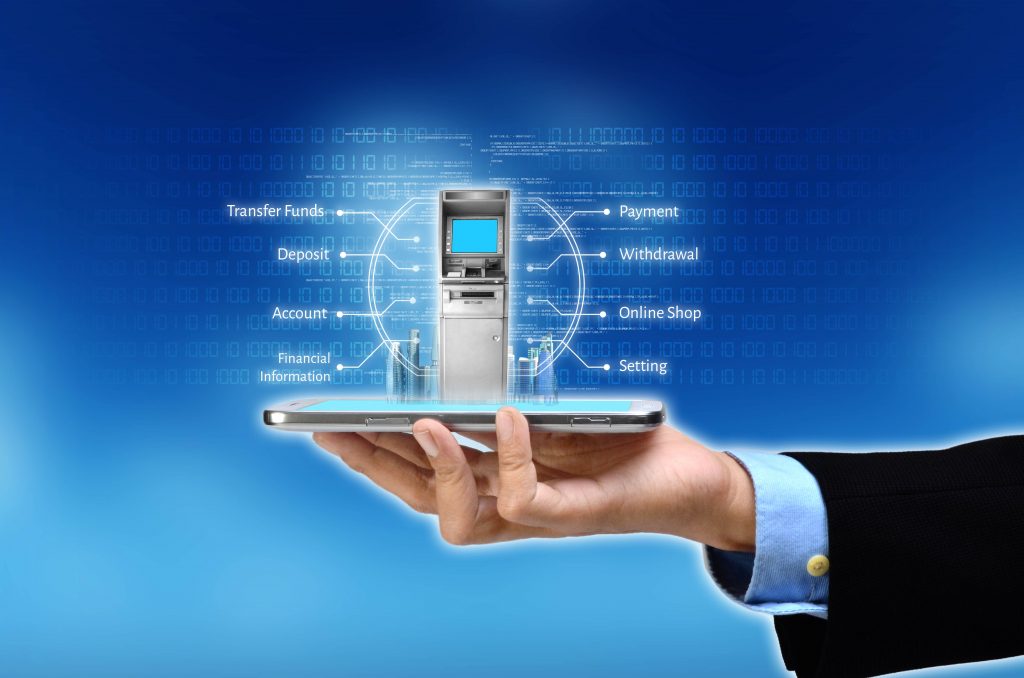Traditional digital payments have long been accepted as the fintech industry standards. However, in response to technological advancement and growing customer demands, real-time payments emerged as a significant breakthrough. In this article, we explore the transformative impact of real-time payments in the fintech industry, analyzing the benefits they offer to financial businesses and their customers. We also highlight the challenges associated with implementing real-time payment systems and provide actionable insights on how to overcome them, so let’s get started right now.
Real-time vs Traditional Payments

The global real-time payments (RTP) market was valued at $13,8 billion in 2021. By 2031, it is expected to reach $123 billion, showing an almost tenfold growth and becoming a strong alternative option to traditional payments. The latter, in turn, most often have significant limitations, such as high fees, slow processing time, and limited availability which is usually frustrating for users.
But what makes real-time payments different, enabling them to offer outstanding advantages that traditional payment systems can’t match? As their name suggests, real-time payment systems allow for near-instant payment processing, which results in value-adding confidence and convenience, benefiting both the sender and recipient.
So, there is no surprise that financial institutions are increasingly turning their attention to RTP technology. In 2023, the Bank of America, JP Morgan Chase, HCBS USA, and Wells Fargo are the banks with real-time payments already embedded, and it is projected that in recent years, real-time payment processing will become a new transaction management and customer experience standard.
The Benefits of Real-Time Payment Systems
Below are the unparalleled benefits a real-time payment option offers to financial institutions and their customers.
RTP Benefits for Customers
- Instant fund availability. Since a real-time payment is received in minutes, it provides users with additional confidence because of instant fund availability. Such an opportunity becomes especially relevant in emergency situations or when the transaction amount is significant, for example, when selling or buying a car.
- Faster eCommerce transactions. When it comes to eCommerce transactions, real-time payments contribute to a significantly enhanced shopping experience. For example, after receiving an instant payment, the business can proceed with processing an order the same day.
- Enhanced convenience. Making an RTP transaction is also more convenient than a traditional funds transfer. With them, users don’t have to look for the most cost-effective, fast, and secured money transfer system of a traditional type. Instead, they can make a quick transaction anytime and from anywhere, achieving greater flexibility and accessibility in managing financial obligations.
- Better cash flow management. Real-time payments help both individual users and businesses manage their cash flows more effectively since the transaction has little to no time in “pending” status. It also enables users to be in better control of their funds.
RTP Benefits for Businesses
- Competitive edge. By integrating a real-time payment option into their service offering, banks and fintech institutions can get a competitive edge, establishing themselves as digital-first, innovative, and customer-focused entities. What’s more, real-time payment technology can be integrated with mobile wallets and online banking apps, delivering more convenience to customers.
- Increased revenue streams. Real-time payments can open up new revenue opportunities through transaction fees and premium services. They will also significantly contribute to improved customer retention, increased loyalty, and user satisfaction, allowing for getting stable and predictable revenue streams in the long run.
- Cost efficiency. Embedding an RTP technology is also more cost-effective than processing conventional payments. The matter is that real-time payments usually involve fewer intermediaries than traditional ones, and the majority of tasks related to instant payment processing are automated. They also allow for reducing the costs associated with dispute resolutions since both parties receive immediate feedback on transaction success or failure.
- Better risk management and compliance. Real-time payment systems often come with built-in compliance features, reducing the need for manual compliance efforts and associated costs.
How to Embed a Real-Time Payment System into Your Fintech Business Processes

So, after the benefits of joining an RTP ecosystem became clear, let’s find out how to do it step-by-step.
Step 1 – Assessment and Planning
Before integrating a real-time payment option into your service offering, it is essential to make a clear assessment of the current infrastructure and identify the specific requirements and objectives for implementing real-time payments. First thing first, it is necessary to determine the compatibility of a current infrastructure with real-time payments, identifying necessary modifications or upgrades.
At this stage, you will also have to analyze the customer’s demand, making sure real-time payments are the option they would like to have, plus estimate the transaction volume. The latter, in turn, is necessary to choose the right real-time payment system API at the next step.
Step 2 – Hiring a Fintech Development Vendor
After assessment and planning, consider partnering with a trusted fintech development vendor, preferably with a prior experience in real-time payment integration. We, at Tino Agency, understand the importance of staying ahead of the curve in the fintech industry. Our team of seasoned fintech experts is here to guide you in integrating a real-time payment system into your business processes, ensuring seamless operations, data and fraud protection, and strict legal compliance. You are welcome to contact us for expert help with real-time payment integration.
Step 3 – Choosing a Real-time Payment System
Supported by your tech vendor, at this step, you have to choose a real-time payment system that will be integrated via API. Below are the most popular options.
- Visa Direct: Visa Direct enables real-time push payments directly to eligible Visa cards globally.
- Mastercard Send: Mastercard Send allows real-time payments to be sent to Mastercard and other participating networks.
- The Clearing House RTP® Network: The RTP® (Real-Time Payments) Network is a real-time payments platform developed by The Clearing House. It provides APIs for financial institutions to connect and offer real-time payment capabilities to their customers.
- PayPal Commerce Platform: PayPal offers APIs for businesses to accept real-time payments online, in-app, and in-store. The platform supports various payment methods and currencies.
- Square Payments API: Square provides APIs that allow businesses to accept real-time payments using Square’s payment processing platform.
Step 4 – Integration and Testing
Integration and testing are crucial and the most difficult phases in the implementation of a real-time payment system. At this stage, a fintech development vendor has to technically connect an RTP system API to your core banking platform and other relevant systems, ensuring its stable performance and seamless operations. After API integration, it is necessary to perform data mapping and validation, making sure data is transferred accurately and consistently during transactions.
Next, the testing phase begins. It usually covers transaction flow, error handling and resilience, performance and security, compliance, and user acceptance (UAT) testing. Depending on the test results and together with your vendor, you will have to optimize the real-time payment system and address the issues, bugs, or performance bottlenecks.
Step 5 – Customer Onboarding
At this step, you are welcome to announce a new real-time payment feature and onboard your customers. So, provide clear instructions on how to access and use the new payment services. You may also offer training and support to help customers become familiar with the system, addressing any concerns or questions they may have.
Step 6 – Monitoring and Optimization
After the real-time payment system is fully integrated into your service offering, you still have to monitor its performance and optimize its operation. For this goal, use analytics and reporting tools to gain insights into transaction trends and customer behavior. It is also necessary to regularly optimize the system to improve efficiency, address any bottlenecks, and enhance the overall customer experience.
Overcoming Challenges in Implementing Real-Time Payments
In addition to the benefits RTP technology provides, there are still some real-time payment challenges you should be aware of before integrating this option into your financial business processes.
Compliance and Regulatory Considerations

Ensuring legal compliance and following regulatory requirements is one of the main challenges of implementing an RTP. Such general fintech regulations as Anti Money Laundering, Know-Your-Customer, and Payment Card Industry Data Security Standards (PCI DSS) are applicable to real-time payment options as well.
To date, real-time payments in the US are regulated by these standards, however, the regulatory landscape for real-time payments is continuously evolving as technology and financial services advance. Financial institutions offering real-time payment services must remain compliant with relevant regulations, standards, and guidelines to ensure the safety and integrity of their payment systems. This, in turn, can be achieved by regular compliance audits, security assessments, and implementing advanced transaction monitoring and fraud prevention measures.
Data Privacy and Fraud Prevention
Real-time payment systems involve the processing and transmission of sensitive financial data. Compliance with data privacy laws, such as the General Data Protection Regulation (GDPR), is essential to safeguard customer information and prevent data breaches.
RTP fraud, in turn, is another real-time payment risk financial companies should mitigate in advance. In addition to being vulnerable to “traditional” fraudulent activities, real-time payments open some extra room for fraudsters because of their rapid processing and irreversible nature. In case of a successful fraud attempt, the customer will not be able to recall a payment, while the fraudster can withdraw the received money instantly as well. That’s why preventing fraud in real-time payments requires a multi-layered approach that combines advanced technology, robust security measures, and customer education.
Interoperability and Standardization

Achieving seamless interoperability and standardization is the next significant challenge of real-time payment systems. Interoperability refers to the ability of different systems to exchange data seamlessly, while standardization involves establishing uniform protocols for communication and processing. At the same time, diverse payment systems may have distinct RTP protocols, data formats, and processing methods, while financial institutions might be connected to various RTP payment networks, each with its own rules and specifications, making it difficult to achieve seamless interoperability. Real-time payment processing becomes even more difficult and challenging when it comes to cross-border transactions with multiple currencies and regulatory requirements involved.
To solve this challenge, it would be wise to join common real-time payment networks like The Clearing House’s RTP® Network, plus foster collaboration among financial institutions, payment networks, and fintech companies to establish common standards and protocols for real-time payments.
Conclusion
Real-time payments have emerged as a game-changer in the fintech industry, offering multiple benefits to financial businesses and their customers. Their convenience, speed, transparency, affordability, and security are considerable reasons to add real-time payment options to your service offering, improve your customers’ money transfer experience and create a solid revenue stream. At Tino Agency, we are well-versed in the latest fintech trends, while our in-house experts know how to make them work for your business. They would be glad to assist you with integrating a real-time payment system and ensure its seamless operation, having user data protection, financial fraud prevention, and legal compliance as some of the first priorities.Get in touch with our fintech development team today to unlock the power of real-time payments for your company!
FAQ
A real-time payment network is a sophisticated infrastructure that makes instant fund transfer possible. Unlike traditional payment networks, RTP allows for sending and receiving money instantly, however, such a transfer is irreversible.
As the name suggests, real-time payments are financial transactions that are initiated, authorized, cleared, confirmed and received in a matter of minutes rather hours or days.
Real-time payments work in the same way that traditional payments, however, their processing time is as short as possible. The main steps to ensure a secured fund transfer in a real-time mode are initiation, authorization, clearing, settlement and confirmation.
